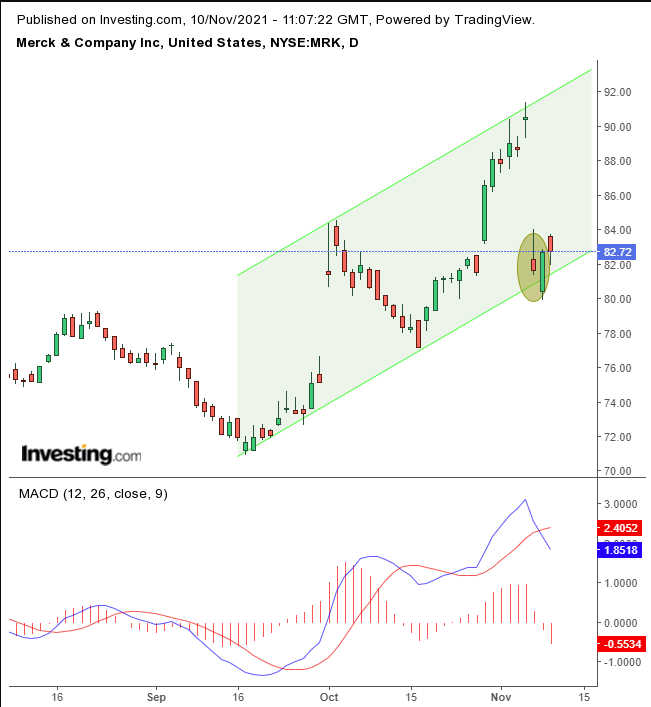When Merck & Company (NYSE:MRK) introduced its COVID-19 pill Molnupiravir in mid October, shares of the New Jersey-based drugmaker immediately found momentum. The treatment has been shown to cut the risk of hospitalization or death for severe coronavirus sufferers by 50%. Indeed, UK regulators almost immediately approved the medication for use in Britain.
However, when Pfizer (NYSE:PFE) announced on Friday that its experimental antiviral pill to treat COVID cut the risk of hospitalization or death by 89%, and that it was filing for emergency FDA approval, Merck investors weren't too pleased. MRK shares finished the day down 10%.
Just over a week ago, Merck forecast up to $7 billion in sales through next year, out of which $1 billion in revenue was already expected before the end of 2021 pending wider regulatory approval for its pill. That's expected to happen sooner rather than later, but Friday's selloff was the most significant drop for the biotech and pharma company's stock since January 2005.
Can Merck survive the competitive threat? Bloomberg points out that “we can’t yet compare the two [drugs] until the risk profile of the patients is clearer,” meaning there's likely room in the market for both drugs. As well, supply and demand technicals suggest the current MRK decline could be a buying opportunity.

Despite Friday's horrendous plunge, the stock found support at the bottom of its rising channel, demonstrating continued demand. Friday's trading developed an inverted hammer which is bullish upon confirmation.
And indeed, the stock closed above the inverted hammer's real body on Monday, providing that confirmation. Since the stock opened lower at the start of Monday's trade but finished above Friday's real body, it formed a Bullish Engulfing Pattern, which occurs when bears give it a go, but bulls have the last word, pushing back, and then some.
With an inverted hammer, the rising channel support, confirmed by a Bullish Engulfing Pattern, makes a good case for a buying dip since the stock is now expected to climb along its rising channel.
Trading Strategies
Conservative traders should wait for the MACD's bearish cross to add its confirmation into the mix before risking a long position.
Moderate traders would wait for the price to retest Monday's low, around $80, to reduce exposure.
Aggressive traders could buy at will. A coherent trading plan is crucial. Here's an example:
Trade Sample
- Entry: $82
- Stop-Loss: $80
- Risk: $2
- Target: $90
- Reward: $8
- Risk:Reward Ratio: 1:4
